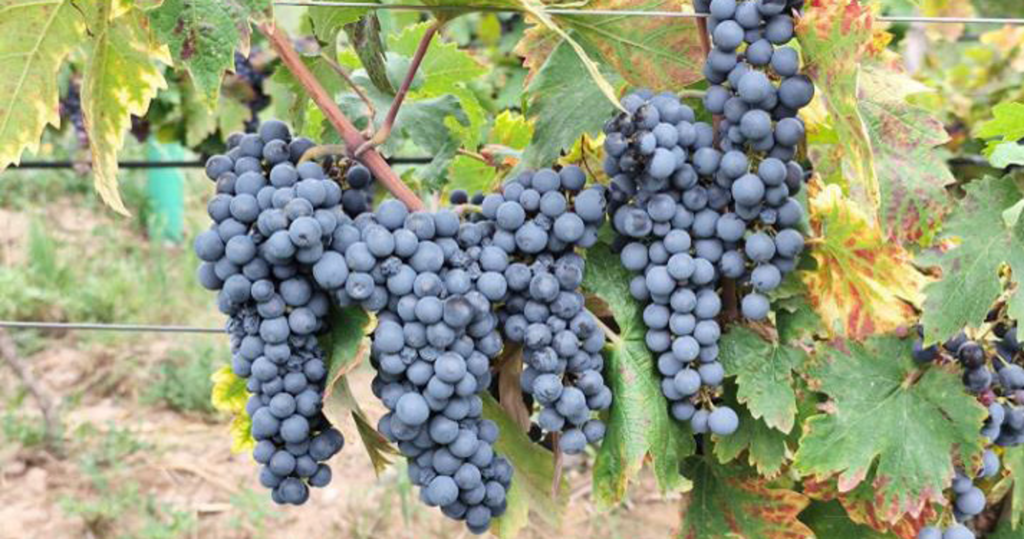Globally, there is a significant impact on the viticulture industry, from table grapes to winemaking, due to losses incurred by infection of grape vines by fungal pathogens, such as botrytis and those causing Grapevine Trunk Disease (GTD). This impact is particularly felt in regions of Europe with a rich history of winemaking for both local and international markets.
Isolated from vineyards in the Mediterranean-like conditions of the Western Cape in South Africa and after many years of success, T-77 has found its niche in Andermatt’s broad portfolio of biocontrol products to combat these fungal diseases in certain markets.
Viticulture in Europe
Viticulture has a long history in Europe, with related sectors such as the wine industry, standing as monoliths of European culture and excellence. The industry has a large role in local communities both socially and economically, countering rural depopulation, and contributing to tourism and local trade.
Despite its historical growth and cultural significance, the European viticulture industry is currently under strain due to climate volatility, declining consumption, and economic pressures, prompting structural adjustments and sustainability initiatives.
Notwithstanding the downturn, the wine industry remains one of Europe’s most important agricultural sectors, accounting for 7.3% of EU agri-food export value in 2024. Globally, EU wine exports represent roughly half of world wine export volumes and around two thirds of the total value of the global wine export market. (“Wine – European Commission,” 2024).

The Challenge
Grapevine Trunk Diseases (GTDs), which are caused by various fungal pathogens that infect pruning wounds during dormancy not only reduce yields but also vine longevity, with older vines usually being more susceptible to infection (De la Fuente et al., 2016). In 2014, it was estimated that in France alone the economic burden of GTD was over €1B due to yield and productivity losses, and the cost of vine replanting (Gramaje et al., 2018).
Botrytis poses a similar threat and burden to GTD, infecting vines throughout flowering and affecting up to 40% of vineyards in Europe, with yield losses ranging from 20-50% (Rahman et al., 2024). While it can be desirable under controlled conditions in the wine-making process, uncontrolled infections degrade grape quality and wine flavor, necessitating tight control of the disease.

T-77 colonizing a pruning wound on grapevine.
Performance of T-77 in Viticulture
T-77, in integrated pest-management (IPM) programs, with applications during flowering and pruning, has been shown to not only effectively control botrytis (Figure 1), but has also been proven to not interfere with the fermentation process in winemaking. Wines produced from grapes treated with T-77 in Australia, France, and South Africa were evaluated across various fermentation and wine-quality parameters. No differences were identified between wines produced from T-77-treated grapes and untreated controls.

Figure 1: T-77 effectively controls botrytis on wine grapes.
Trialed in Italy (2017), T-77 outperformed the reference biological control agent.
Given the foliar origins of the Trichoderma strain used in T-77, the product excels in the above-ground environment of grape vines. In a Canadian trial (2019), examining the efficacy of T-77 in the control of GTD when applied at pruning (Figure 2), T-77 exemplified its longevity in-field, offering protection against GTD for up to 60 days post-treatment. The fast-acting nature of the product, offering protection from one day post-treatment with T-77, was also made abundantly clear.

Figure 2: Grapevine trunk disease pathogens controlled by T-77.
T-77-treated grapevines inoculated one day post-pruning with GTD-causing pathogens (Neofusicoccum parvum, Diplodia seriata, and Eutypa lata) 1-, 7-, 21-, and 60-days post-treatment.
Building Momentum Toward EU Registration
Off the back of T-77’s success in South African viticulture and the promising trials undertaken thus far in European vineyards, the product has been registered in countries such as Brazil and is currently undergoing registration in other regions such as Canada, the USA, and the EU. European farmers can expect to have T-77 in their hands and fields, fully registered and ready for use, by late 2027.
Conclusion
T-77 offers a reliable, residue-free solution to two of viticulture’s most persistent fungal threats. Its proven efficacy, safety in winemaking, and compatibility with IPM strategies position it as a valuable tool for European growers seeking sustainable disease management. As industry continues to evolve, T-77 provides a bridge between tradition and innovation—protecting vines, preserving quality, and supporting the future of European viticulture.
Tim Kirkman,
T-77 Global Product Manager,
Andermatt-PHP
tim.kirkman@andermatt-php.co.za
References
De la Fuente, M., Fontaine, F., Gramaje, D., Armengol, J., Smart, R., Nagy, Z.A., Borgo, M., Rego, C., Corio-Costet, M.-F., 2016. Grapevine Trunk Diseases. A review. OIV Publ. 1st Edition.
Gramaje, D., Úrbez-Torres, J.R., Sosnowski, M.R., 2018. Managing Grapevine Trunk Diseases With Respect to Etiology and Epidemiology: Current Strategies and Future Prospects. Plant Dis. 102, 12–39. https://doi.org/10.1094/PDIS-04-17-0512-FE
Rahman, M.U., Liu, X., Wang, X., Fan, B., 2024. Grapevine gray mold disease: infection, defense and management. Hortic. Res. 11, uhae182. https://doi.org/10.1093/hr/uhae182
Wine – European Commission [WWW Document], 2024. URL https://agriculture.ec.europa.eu/farming/crop-productions-and-plant-based-products/wine_en (accessed 8.21.25).